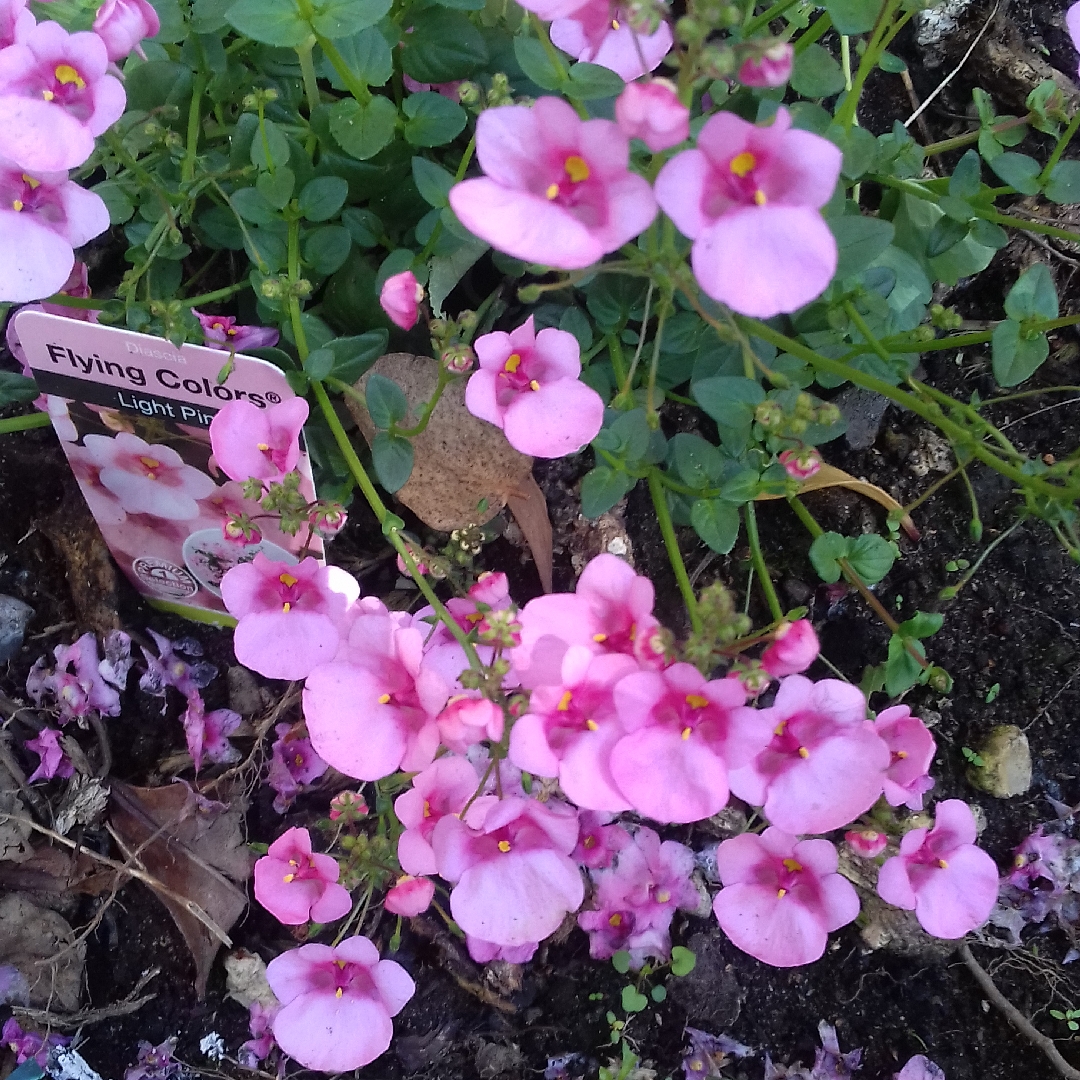
Diascia 'Flying Colours Light Pink'
Twinspur 'Flying Colours Light Pink'
Most diascia varieties are low-growing bedding plants, also suitable for containers and hanging-baskets, but some varieties have tall, upright.spires of flowers. The flowers are small, but profuse. The leaves are dark green and oval. Diascia 'Flying Colours' is a tender, trailing perennial, often grown as an annual, with light green leaves and, in summer and early autumn, short, wiry stems bearing loose racemes of pale pink flowers with darker pink centres.
Contributed by @grh
-
Full sun to partial shade
-
Occasional watering
-
A little frost hardy: 32F (0°C)
-
Free draining and fertile
Common name
Twinspur 'Flying Colours Light Pink'
Latin name
Diascia 'Flying Colours Light Pink'
type
Annual or perennial
family
Scrophulariaceae
ph
6.0 - 7.0 Acid - Neutral
Plant & bloom calendar
-
Best time to plant
-
When the plant will bloom
full grown dimensions
 0.50 M
0.25 M
0.50 M
0.25 M
Diascia 'Flying Colours Light Pink'
Most diascia varieties are low-growing bedding plants, also suitable for containers and hanging-baskets, but some varieties have tall, upright.spires of flowers. The flowers are small, but profuse. The leaves are dark green and oval. Diascia 'Flying Colours' is a tender, trailing perennial, often grown as an annual, with light green leaves and, in summer and early autumn, short, wiry stems bearing loose racemes of pale pink flowers with darker pink centres.
Flowering
From Early Spring TO Late Autumn
Diascia have a long flowering season, from early Summer to late Autumn in UK - in their native South Africa the flowering season is shorter
Planting
From Mid Spring TO Late Spring
Plant in Spring in a sunny site in well-drained fertile, good-quality soil.
Propagating by cuttings
From Early Spring TO Mid Spring
Take cuttings from new growth early in the day in Spring. Cut, neatly, a 4" approx. piece of a non-flowering shoot, pinch out the tip, and cut off the bottom leaves. Dip the bottom of the cutting in hormone rooting powder, and carefully place in a pot of cutting compost with the leaves just above the level of the compost. Water, label, cover with a polythene bag, and place in a warm, bright place, out of direct sunlight. Take the polythene bag off periodically for a while for ventilation (at least twice a week)








